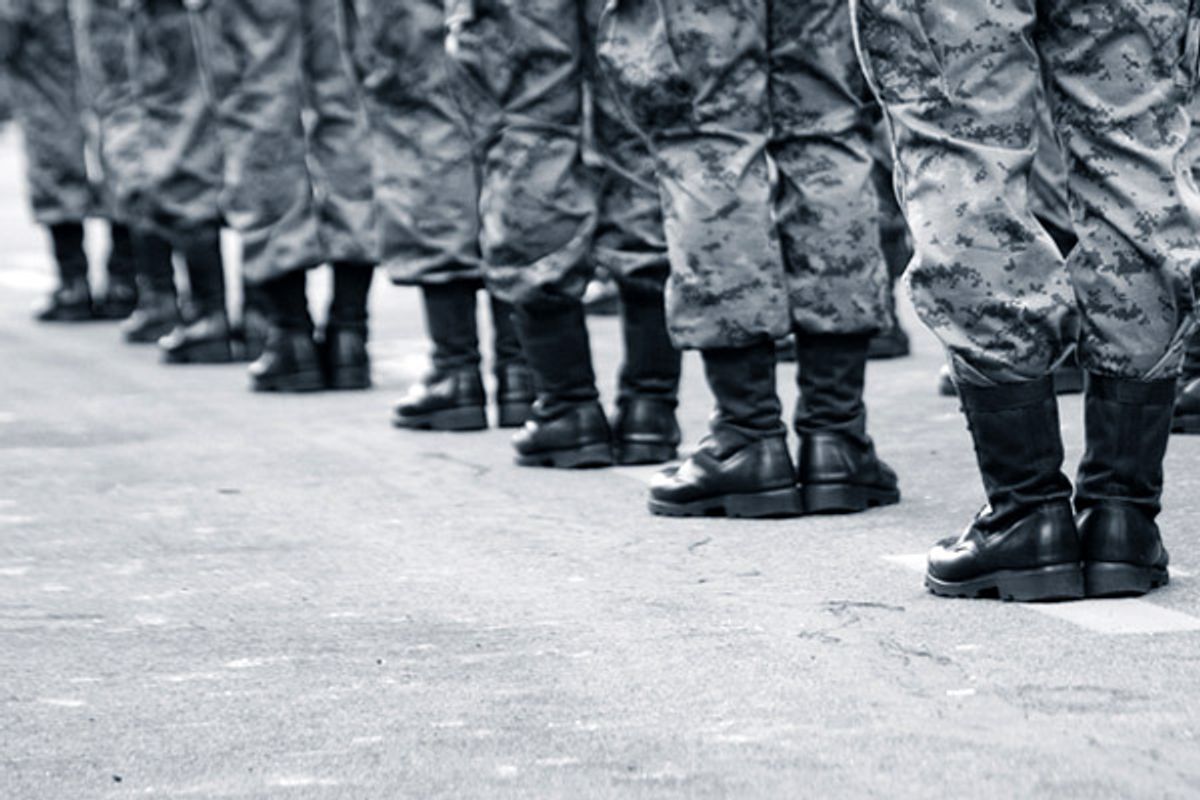 Franklin D. Roosevelt, the president who led the United States into the depths of total war and back out again, has a little-visited memorial on the far side of the Tidal Basin in Washington, D.C. It’s private and reflective, like the man himself, and chiseled into the rough stone are these words, from a Chautauqua speech made three years before the German invasion of Poland: “I have seen war. I have seen war on land and sea. I have seen blood running from the wounded… I have seen the dead in the mud. I have seen cities destroyed… I have seen children starving. I have seen the agony of mothers and wives. I hate war.”
Franklin D. Roosevelt, the president who led the United States into the depths of total war and back out again, has a little-visited memorial on the far side of the Tidal Basin in Washington, D.C. It’s private and reflective, like the man himself, and chiseled into the rough stone are these words, from a Chautauqua speech made three years before the German invasion of Poland: “I have seen war. I have seen war on land and sea. I have seen blood running from the wounded… I have seen the dead in the mud. I have seen cities destroyed… I have seen children starving. I have seen the agony of mothers and wives. I hate war.”
The awful cost and calculus of war never changes, of course, but in the 60 years between Operation Overlord and Operation Iraqi Freedom, our understanding of the human brain, on and off the battlefield, has marched far ahead. Post-traumatic stress disorder—what Roosevelt would have known as “shell shock”—is now both a clinical term and a household one. A traumatic brain injury is understood to be as dangerous a wound as the kind that bleeds. Psychologists like Brett Litz of Boston University even speak of “moral injury”—an act of transgression that violates a soldier’s ethical or religious code, and leaves its scar chiefly on the soul, rather than the body or the brain.
PTSD affects some 27 percent of soldiers returning home from Iraq and Afghanistan, according to the Congressional Research Service, while the suicide rate among male veterans is quadruple that of civilians. Those figures only include soldiers who sought help through VA hospitals, suggesting the actual numbers are higher.
For all the hand-wringing now going on at the top levels of the Pentagon, we understand relatively little of the neuroscience behind PTSD. Is it “combat exposure”—suffering and perpetrating the quotidian atrocities of war—that leads veterans to unravel once they’re back home? Or might some soldiers simply be predisposed to emotional distress?
That’s the question Dorthe Bertnsen, a Danish psychologist, and her colleagues raise in a novel study to be published in Psychological Science. Despite three decades of research, the authors note, there’s almost no baseline data on soldiers with PTSD, yet only by evaluating servicemenbefore they go into battle can we make sense of how they fare later.
The authors interviewed 366 Danish soldiers, male and female, at five points throughout their deployments to Afghanistan: before, during, and three times in the year after they came home. They then mapped the soldiers’ emotional trajectories, to see who came home damaged—and why.
Some interesting lessons emerged. Bertnsen identified three common paths: resilient soldiers, who showed low levels of PTSD symptoms throughout their deployments; afflicted soldiers, who showed low levels during deployment but increasingly began to suffer in the months after returning home; and, paradoxically, soldiers who appeared to actually benefit from being in combat, with high levels of PTSD symptoms before and after service, but not during.
Afflicted soldiers—those who enlisted healthy but came home distressed—were more likely to have had trauma in their personal lives, and to have received help for emotional problems, than their resilient peers. Many had witnessed family violence, been physically abused as children (burned, cut, bruised), or been assaulted by a partner. “Traumas involving interpersonal violence in childhood appeared especially central,” the authors report. “This finding adds to previous work showing the importance of childhood traumas as a risk factor for PTSD later in life.”
More surprising were the soldiers who “benefitted” from combat—those whose PTSD symptoms were temporarily abated while overseas but returned upon homecoming. This cohort, which accounted for 13 percent of the Danish soldiers, tended to be less well educated, with a high incidence of “pronounced emotional problems.” The servicemen apparently found the army’s camaraderie and esprit de corps a happy escape, however temporary, from the stressors of home life.
All of which muddies our understanding of PTSD—and refines it.
There is no single PTSD experience, the authors conclude, and any number of factors, not just combat exposure but childhood trauma and education level, influence how a veteran deals with the emotional aftershocks of war. “This does not defy a dose-response view of PTSD—that is, the view that the magnitude of the trauma predicts the severity of the symptoms—but suggests that such a view be considered in a more complex…perspective.”
With our troops home from Iraq and soon to leave Afghanistan, the “war on terror” is long over. The war on PTSD, however, has only just begun. It won’t be easily won.

Shares